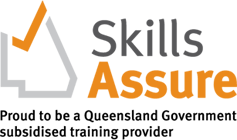Most people believe that ATAR is the only way to start a degree, but this isn’t the case. While ATAR is the primary way universities judge an applicant’s suitability for a course, it isn’t the only way to enrol.
Many high-achieving university graduates enter university using alternative pathways. With a determined mindset and a passion for your subject, it’s entirely possible to enter and thrive at university with little to no secondary school qualifications.
In this article, we’ll explore eight of the popular alternative routes to university and give you some advice on choosing the best pathway for you.
Do you need ATAR to enter university in Australia?
The Australian Tertiary Admissions Rank (ATAR) is a performance ranking that ranges from 0.00 to 99.5. It assesses students’ abilities and judges whether they will be suitable for a university degree. The higher the score, the better a student’s performance at school, and the more likely it is they will be accepted into their course.
If this all sounds concerning, don’t worry. These days, there are many different ways to enrol to university. Alternative pathways are becoming increasingly popular, and universities are more willing than ever to accept students that have gained experience in different ways.
8 alternative ways to get into university without ATAR
Let’s explore eight different ways you can get into university without using ATAR.
1) Vocational Education and Training (VET)
For students interested in practical roles but don’t meet the minimum entry criteria for a university degree, a VET course is an outstanding way to build the skills you need to progress to degree level.
VET courses are available in hundreds of different subjects. From childcare and nursing to cybersecurity and counselling, if you like getting hands-on and want to work in a vocational field, there’s a VET course for you.
The primary benefit of VET courses is that they offer a clear progression pathway. The Australian Qualifications Framework specifies ten levels. These are:
- Level 1-4: Certificate I, II, III, IV (VET)
- Level 5: Diploma (VET)
- Level 6: Advanced Diploma (VET)
- Level 7: Bachelors’ Degrees
- Level 8: Graduate Degrees
- Level 9: Masters’ Degrees
- Level 10: Doctoral Degrees (PhD).
Certificate I, II, III and IV, Diploma and Advanced Diploma courses all fall under the VET qualification framework. Each is a level above the last. The simplest way to progress into a Bachelor’s degree is to work up the qualifications framework by completing Certificate and Diploma courses in the same field as your desired university course.
For example, a common pathway to a degree in community services or the aged care sector may look like this:
- Certificate III in Individual Support (Ageing or Disability): This program is the foundational course for aged care workers. It teaches the fundamental knowledge needed to progress onto a higher-level course or find an entry-level position in the aged care sector.
- Certificate IV in Ageing Support: This course offers more advanced knowledge, providing a pathway to diploma courses or a more specialised job role.
- Diploma of Community Services: Diplomas are more advanced programs and build on the knowledge learned in Certificate courses. Once you have a diploma, it will act as an accredited qualification you can use to enrol at university.
- Degree in Community Service or Aged Care: Now that you’ve completed a series of VET qualifications, you can use your new certifications to apply for your chosen degree qualification.
Most entry-level VET courses have little to no entry requirements. This means you can start one straight out of school, even if your academic qualifications weren’t what you’d hoped for. If you’re a mature student, don’t worry. VET courses welcome people from all walks of life. No matter your age, VET is a great way to transition into higher education, boost your career prospects, and build skills that last a lifetime.
The beauty of VET courses is that they act as standalone qualifications that you can use to find employment, even if you don’t decide to go to university once you complete your training. VET courses provide you with the hands-on skills and practical expertise you need to succeed in a vocational role. This makes them equally excellent for those looking to progress to higher education and those looking to secure a job once they finish their course.
2) Foundation programs
Many universities, colleges and Technical and Further Education (TAFE) institutes in Australia offer foundation courses to give students a pathway to university, even if they don’t meet the entry requirements for their desired course.
These training programs bridge the gap between high school and university by offering students the opportunity to build their knowledge and understanding of academic topics.
Foundation courses lay the groundwork for the kind of content a student will learn in their university degree. Universities typically teach these courses over a one-year period. Students are usually not required to sit exams at the end of their course. Instead, most foundational courses contain an internal assessment process that assesses students’ knowledge and capabilities throughout the year.
Foundation courses may take place on a university campus or be entirely online, allowing students to complete their studies at home. That said, foundation courses are usually intensive, as they are designed to prepare students to transition into a higher education course immediately. Many universities will replicate the lecture format of a traditional degree program to give students a taste of university life while they study.
Foundation programs are also an excellent way for international students to prepare for an Australian degree program if they haven’t yet achieved the entry requirements for their chosen course.
While foundation programs are a reliable, consistent pathway to university, they can be very expensive, meaning they aren’t a great choice if a student is not yet convinced they are ready for a full-time degree. For this reason, foundation programs are best suited to those who are completely confident they want to go to university.
3) Enabling courses
Enabling courses allow students to develop core skills and experience needed for life at university. Enrolees can expect a smaller, supportive group environment and guided lessons that help them become familiar with the university process.
Enabling courses are excellent for people new to academia and for those who want to get used to university before enrolling on a full-time degree program.
An enabling course usually isn’t tied to the degree the student hopes to complete. The goal is to teach core skills such as academic writing, communication and time management skills that the applicant can apply to any university degree once they complete their course.
For this reason, an enabling course might not act as an entry pathway into degrees that require a high level of academic qualification. In this case, a VET course or foundation year would be a better approach to gaining entry.
4) Undergraduate certificates
The undergraduate certificate is a recent qualification that is one level above a diploma and one level below a bachelor’s degree. It typically consists of four modules and takes six months to complete.
Applicants can undertake an undergraduate certificate face-to-face or online. Students will usually complete coursework and internal assessments in a university setting. This makes undergraduate certificates an excellent way to discover whether university life is right for you.
Undergraduate certificates differ from enabling courses because they count as a standalone qualification, even if the student does not pursue a degree program after completing their course.
However, most students use undergraduate certificates as an entry pathway into higher education because an undergraduate qualification is rarely enough to secure employment on its own. Students looking for a course specifically to secure employment may consider a Certificate IV or Diploma course if they don’t want to proceed to higher education.
5) Special Tertiary Admissions Test (STAT)
The STAT test is a specialist test that provides an alternative pathway for entry into tertiary education courses. It assesses the candidate’s academic readiness and potential for success in higher education. A STAT test can be completed by anyone that doesn’t meet the required academic qualifications for a university degree.
STAT tests are only available for ‘mature-age’ applicants. This means you must be above a certain age to apply. The minimum age requirement for a STAT test application differs by state and territory.
The test consists of multiple-choice questions and is typically timed. It assesses abilities such as critical thinking, problem-solving, and written communication. Once you complete the test, you will receive a score that you can use instead of ATAR when applying for different university courses.
6) Advanced standing (recognition of prior learning)
Also known as Credit for Recognised Learning (CRL), Advanced Standing allows you to use your previous study or work experience to demonstrate you have the skills needed to succeed in an undergraduate degree.
Suppose you have already studied some of the units listed in your chosen undergraduate course or have work experience that aligns with your degree requirements. In that case, you may be eligible to apply. If your expertise demonstrates you have already reached the standard required for certain modules, the university may also allow you to pass specific units without taking them. This means you could study your degree in considerably less time.
Every university is different, with its own standards for advanced standing, so it’s best to contact your desired university directly to find out more.
7) Educational Access Scheme (EAS)
The EAS aims to help those who have been significantly disadvantaged during their time at school or college. If you can prove that you struggled during your studies for reasons outside of your control, you may be eligible to apply for the scheme.
To apply, you must be able to show proof that your studies were impacted during
- Year 11 and/or Year 12
- The time in which you gained the qualifications you are using to apply for a university degree.
In addition, you must also:
- Be an Australian citizen, an Australian permanent resident, or a New Zealand citizen.
- Be a UAC undergraduate student.
Note that this means international students cannot apply for EAS. A foundation program is a more accessible pathway for international students if they do not meet the academic requirements to start an undergraduate course outright.
8) Portfolio entry pathway
The portfolio entry pathway offers students the chance to apply for university with a selection of documents that prove their academic achievements, work experience, extra-curricular achievements and/or qualifications.
This pathway is especially suitable if you intend to enrol on a creative course. For example, when applying for a creative writing program, a selection of your previous written work may show the university that you have the skills needed to succeed, even if you don’t meet the usual entry requirements.
While your portfolio might not act as a complete substitute for academic qualifications, as long as you have a broad body of work that displays your talent, the portfolio entry pathway is an excellent way to start a university degree without ATAR.
Which pathway is right for me?
The best pathway for you will depend on your situation, circumstances, and experience.
If you’re looking for a linear pathway to university, enjoy hands-on subjects, and want to build job-ready skills that you can immediately apply to a vocational role when you finish your education, a VET course is the way to go.
If you want to get started with VET, choose Sage. We are one of Australia’s leading providers of accredited vocational courses in the childcare, aged care, and disability care sectors. Our courses cover everything you need to know to transition into higher education. Plus, if you decide you don’t want to go to university once you finish your training, our programs also make it easy to kickstart your career.
Sage also offers complete support to all of its graduates. Whether you need help securing your first job or want advice on which course to choose, we’ll help you take your next steps with confidence.
If you’d like to learn more about our accredited VET courses, don’t hesitate to reach out. A member of our team will be on hand to answer any questions you may have.



